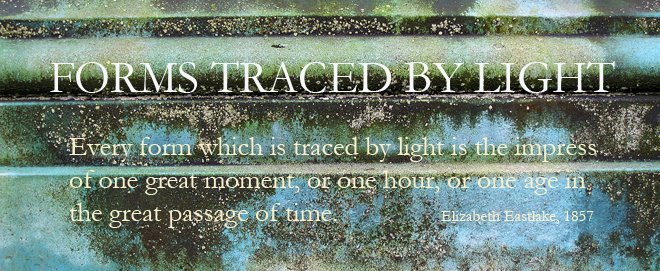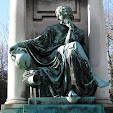 I've passed this window a lot of times today, trying to do one last frenetic redistribution of things from the attic before the contractors arrive to frighten the cats, and us, at dawn - well, early morning - tomorrow. This seems to be a suitably Sleeping-Beauty arrangement of cobwebs to symbolize the accumulation of Bits of the Past that are still up there - on on their way down to the basement - or have ended up lodged here, in my study. It's not quite as scary as it looks, of course - a macro lens can render even a two inch patch of spider web intimidating - like Eliot's description of Bulstrode in Middlemarch convincing himself, through endless reiteration, that he did everything for God's sake, not his own - such arguments being spun, by the years, "into intricate thickness, like masses of spider-web, padding the moral sensibility." Eliot, as ever, is wonderfully prescient about the narratives people tell to convince themselves - never mind others, even - of their own incorrigible rightness.
I've passed this window a lot of times today, trying to do one last frenetic redistribution of things from the attic before the contractors arrive to frighten the cats, and us, at dawn - well, early morning - tomorrow. This seems to be a suitably Sleeping-Beauty arrangement of cobwebs to symbolize the accumulation of Bits of the Past that are still up there - on on their way down to the basement - or have ended up lodged here, in my study. It's not quite as scary as it looks, of course - a macro lens can render even a two inch patch of spider web intimidating - like Eliot's description of Bulstrode in Middlemarch convincing himself, through endless reiteration, that he did everything for God's sake, not his own - such arguments being spun, by the years, "into intricate thickness, like masses of spider-web, padding the moral sensibility." Eliot, as ever, is wonderfully prescient about the narratives people tell to convince themselves - never mind others, even - of their own incorrigible rightness. But of course it's the abstract nature of this image - at once almost glutinous, cloying, and yet fragmenting - that really grabs me: that moment when, as the photographer Henry Holmes Smith - yes! someone who experimented with flash photography, and did some really strange abstract stuff too - wrote in 1956, one sees "the tangible and inconsequential transformed into the intangible and consequential." This is as good a description of any of why I like (and practice) photography that hovers on the edge of abstraction.


No comments:
Post a Comment